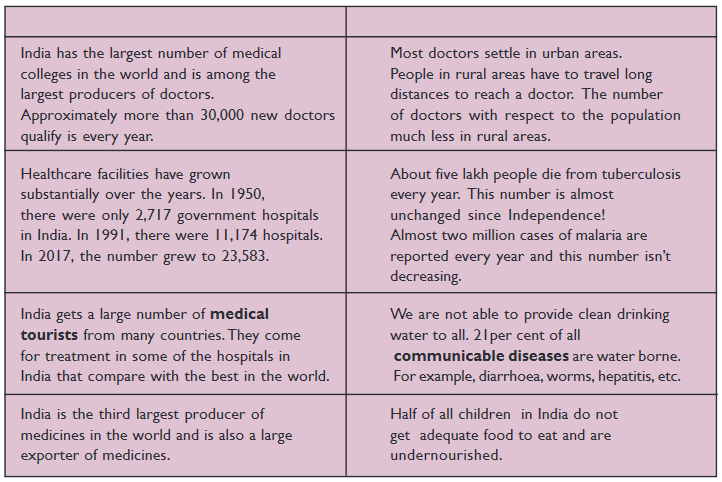Table of Contents

State Government
Teacher’s note
These two chapters (Chapters 2 and 3) on State Government are an attempt to discuss the functions and structure of government through concrete situations. We have chosen ‘health’ as an example; there could have been other, equally important, choices.
Chapter 2 discusses ‘health’ as an important issue for people. There are both public and private aspects of health provisioning. Healthcare in India is not available to all. While the Constitution supports a view that the right to health is an aspect of our fundamental rights, its provisioning is rather unequal. Through the accounts provided, learners will begin to visualise the ideal or desired role of government, and the meanings behind its structures. Some ways in which this situation can be changed are also discussed.
Chapter 3 focuses on how the government functions, and discusses ideas of representation, accountability and public welfare. Though both the executive and the legislature are presented, one should not expect students to retain fine distinctions. It would be best to patiently encourage them to ask questions such as, “Who is the most powerful person?”, “Why can’t the MLA solve the problem?”, etc. Such queries will enable them to construct a sense of the government apparatus.
It is important that learners acquire the confidence to express their views on public issues and understand the role of government through the exercises given in the chapters. You could choose familiar issues such as water, transport, school-fees, books, child-labour, etc., for them to discuss and arrive at how these problems need to be tackled. Allow them to express these ideas through wall charts. Given that discussions on the government and its functioning often lead to boredom and cynicism, we need to be able to make
the classroom session less didactic and more interactive while teaching these lessons.

CHAPTER 2
Role of the Government in Health
In a democracy people expect the government to work for their welfare. This could be through the provision of education, health, employment, housing or the development of roads, electricity etc. In this chapter we shall examine the meanings and problems related to health. Look at the sub-headings of this chapter. In what ways do you think this topic is related to the work of government?
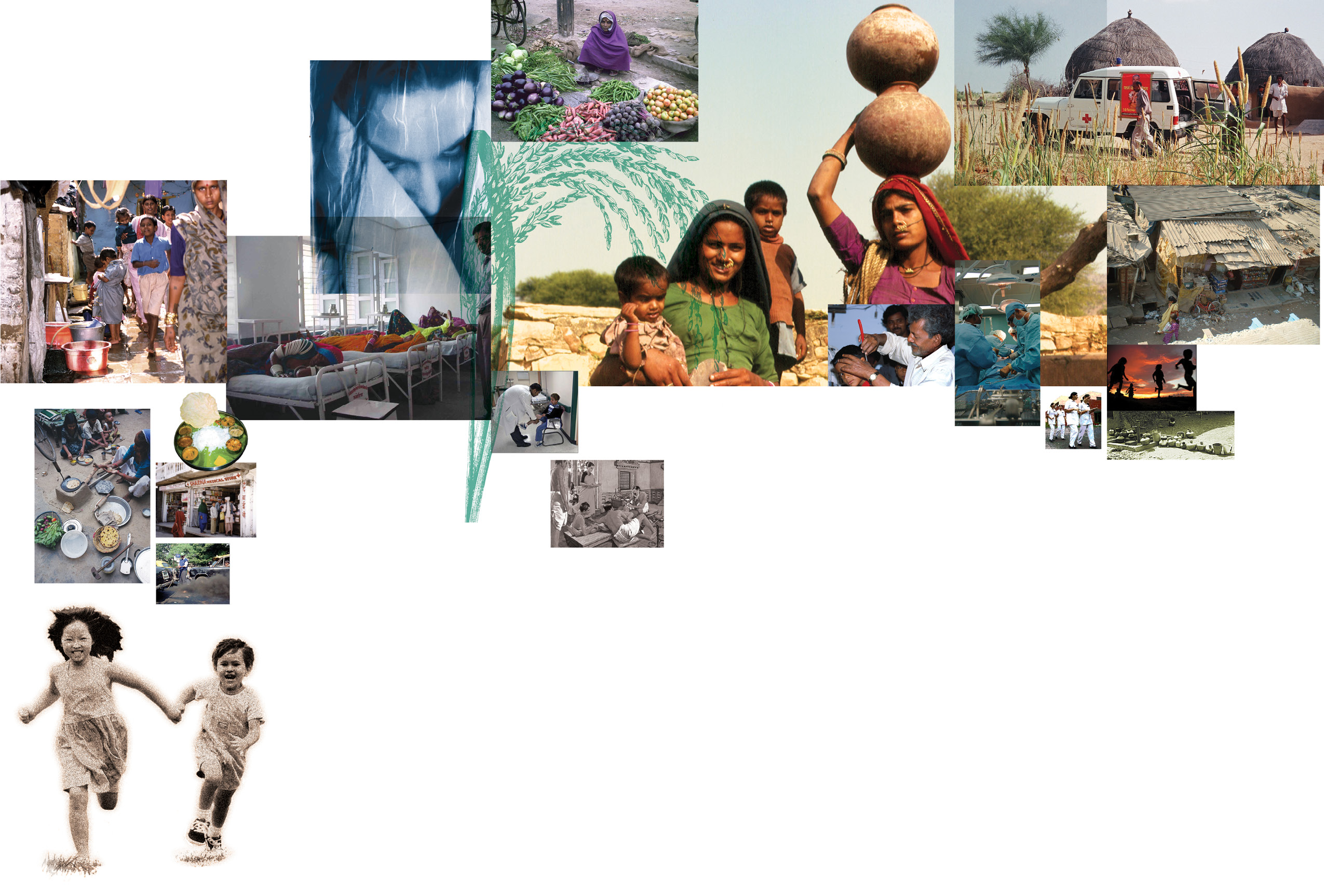
What is health?
We can think of health in many ways. Health means our ability to remain free of illness and injuries. But health isn’t only about disease. You may have associated only some of the situations in the above collage with health. What we often ignore is the fact that each of the above situations is related to health. Apart from disease, we need to think of other factors that affect our health. For example, if people get clean drinking water or a pollution free environment they are likely to be healthy. On the other hand, if people do not get adequate food to eat or have to live in cramped conditions, they will be prone to illness.
Would you associate all or some of these pictures with ‘health’ ? In what ways? Discuss in groups.
Pick two situations from the above collage that are not related to illness and write two sentences on how they are related to health.
All of us would like to be active and in good spirits in whatever we may be doing. It isn’t healthy to be dull, inactive, anxious or scared for long stretches of time. We all need to be without mental strain. All of these various aspects of our lives are a part of health.
Healthcare in India
Let us examine some of the aspects of healthcare in India. Compare and contrast the situation expressed in the first and second columns.
Can you provide a title to these columns?
In order to prevent and treat illnesses we need appropriate healthcare facilities such as health centres, hospitals, laboratories for testing, ambulance services, blood banks, etc., that can provide the required care and services that patients need. In order to run such facilities we need health workers, nurses, qualified doctors and other health professionals who can advice, diagnose and treat illnesses. We also need the medicines and equipment that are necessary for treating patients. These facilities are required to take care of us.
In India, it is often said that we are unable to provide health services for all because the government does not have enough money and facilities. After reading the above left hand column, do you think this is true? Discuss.
India has a large number of doctors, clinics and hospitals. The country also has considerable experience and knowledge in running a public healthcare system. This is a system of hospitals and health centres run by the government. It has the ability to look after the health of a large section of its population scattered over hundreds of thousands of villages. We will go into more detail on this later. Moreover, there has been a phenomenal advancement in medical sciences whereby many new technologies and treatment procedures are available in the country.
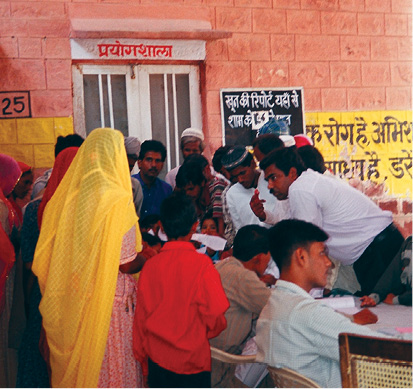
Patients usually have to wait in long queues in government hospitals, like this one.
However, the second column points out how poor the health situation in our country is. With all the above positive developments we are not able to provide proper healthcare facilities to people. This is the paradox – something that is contrary to what we would expect. Our country has the money, knowledge and people with experience but cannot make the necessary healthcare available to all. In this chapter, we will look at some of the reasons for this.
The story of Hakim Seikh
Hakim Seikh was a member of the Paschim Banga Khet Mazdoor Samity (PBKMS), an organisation of agricultural labourers in West Bengal. One evening in 1992, he accidentally fell off a running train and suffered head injuries. He was in a very serious condition and needed immediate treatment.
He was taken to a government hospital in Kolkata but they refused to admit him because they did not have a spare bed. Another hospital did not have the facility or the specialised doctors necessary for his treatment. In this way he spent 14 hours in a critical state and was taken to eight different government hospitals, but none of them admitted him.
Finally, he was admitted in a private hospital, where he received treatment. He spent a lot of money on his treatment. Angry and upset over the indifferent attitude of all the hospitals that refused to admit him, Hakim Seikh and PBKMS filed a case in the court.
Read the story given above. Then imagine that you are a Judge in the court. What would you say to Hakim Seikh?
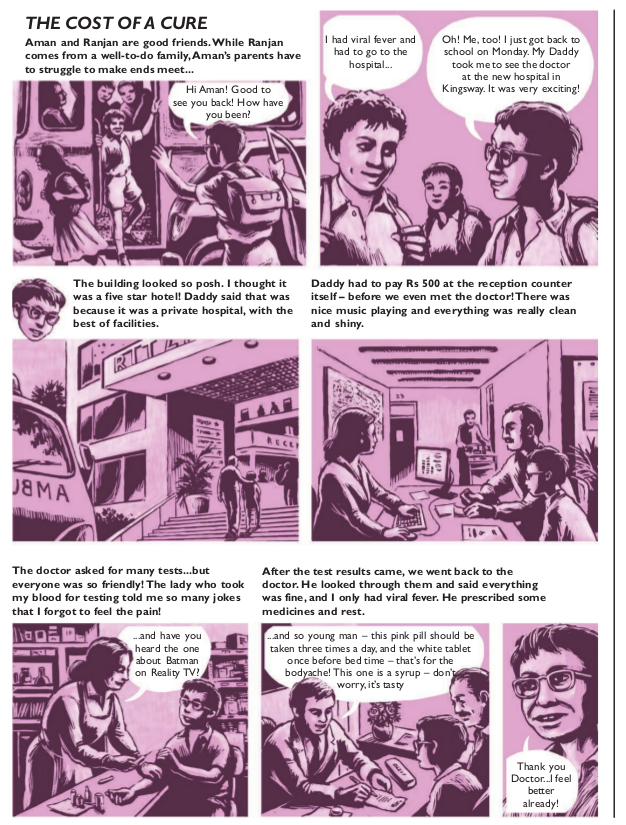
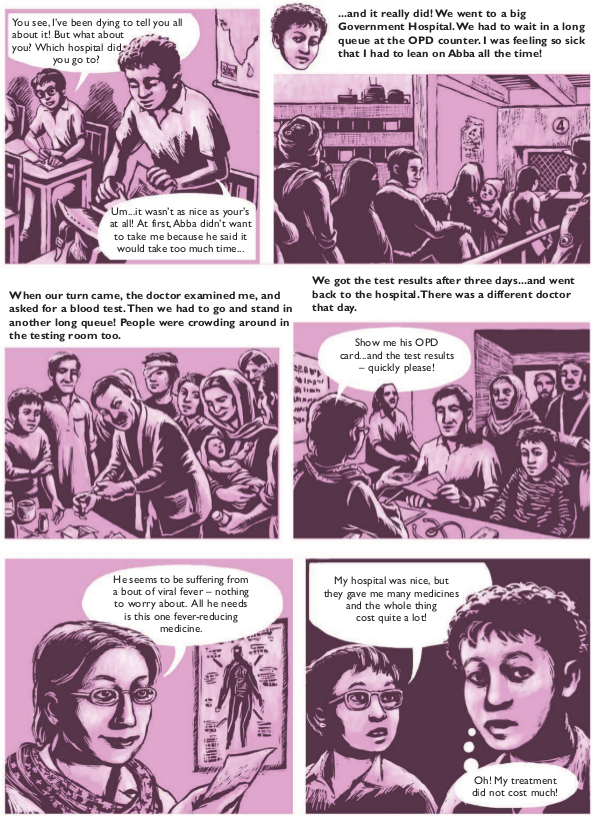
Where do you go when you are ill? Are there any problems that you face? Write a paragraph based on your experience.
What problems did Aman face in the government hospital? How do you think the hospital can work in a better manner? Discuss.
Why did Ranjan have to spend so much money? Give reasons.
What problems do we face in private hospitals? Discuss.
Public and private health care services
From the above story, you must have understoodthat we can roughly divide up various health carefacilities in two categories –
(a) Public health services and
(b) Private health facilities.
Why pay taxes to the government?
Government uses tax money for providing many public services for the benefit of all citizens. Some services such as defence, police, judicial system, highways etc. benefit all citizens. Otherwise, the citizens cannot organise these services for themselves.
Taxes fund developmental programmes and services such as education, health care, employment, social welfare, vocational training etc. required for needy citizens. Tax money is utilised for relief and rehabilitation in case of natural disasters such as floods, earthquakes, tsunami etc. Space, nuclear, and missile programmes are also funded from the revenues collected as taxes.
Government provides some services especially for the poor who cannot afford to purchase them from the market. One example is health care. Can you give other examples?
Public health services
The public health service is a chain of health centres and hospitals run by the government. They are linked together so that they cover both rural and urban areas and can also provide treatment to all kinds of problems – from common illnesses to special services. At the village level there are health centres where there is usually a nurse and a village health worker. They are trained in dealing with common illnesses and work under the supervision of doctors at the Primary Health Centre (PHC). Such a centre covers many villages in a rural area. At the district level is the District Hospital that also supervises all the health centres. Large cities have many government hospitals such as the one where Aman was taken and also specialised government hospitals such as the ones in Hakim Seikh’s story.
The health service is called ‘public’ for many reasons. In order to fulfil its commitment of providing health care to all citizens, the government has established these hospitals and health centres. Also, the resources needed to run these services are obtained from the money that we, the public, pay to the government as taxes. Hence, such facilities are meant for everyone. One of the most important aspects of the public health system is that it is meant to provide quality health care services either free or at a low cost, so that even the poor can seek treatment. Another important function of public health is to take action to prevent the spread of diseases such as TB, malaria, jaundice, cholera, diarrhoea, chikungunya, etc. This has to be organised by the government with the participation of people otherwise it is not effective. For example, when taking up a campaign to see that mosquitoes do not breed in water coolers, rooftops, etc., this has to be done for all houses in the area.
Recall the case of Hakim Seikh. Would you like to know what the court said in this case?

A doctor in a rural health care centre giving medicines to a patient.
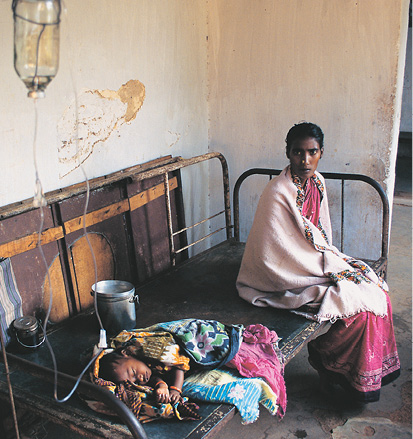
A woman and her sick child at a government hospital. According to UNICEF, more than a million children die every year in India from preventable infections.
According to our Constitution, it is the primary duty of the government to ensure the welfare of the people and provide health care facilities to all.
The government must safeguard the Right to Life of every person. The Court said that the difficulty that Hakim Seikh had to face could have cost him his life. If a hospital cannot provide timely medical treatment to a person, it means that this protection of life is not being given.
The Court also said that it was the duty of the government to provide the necessary health services, including treatment in emergency situations. Hospitals and medical staff must fulfil their duty of providing the necessary treatment. Hakim Seikh was denied treatment at various government hospitals. Therefore, the Court asked the State Government to give him the money that he had spent on his treatment.
In what ways is the public health system meant for everyone?
List some Primary Health Centres (PHCs) or hospitals near your place. From your experience (or by visiting any one of them), find out the facilities provided and people who run the centre.
Private health facilities
There is a wide range of private health facilities that exist in our country. A large number of doctors run their own private clinics. In the rural areas, one finds Registered Medical Practitioners (RMPs). Urban areas have a large number of doctors, many of them providing specialised services. There are hospitals and nursing homes that are privately owned. There are many laboratories that do tests and offer special facilities such as X-ray, ultrasound, etc. There are also shops from where we buy medicines.
As the name suggests, private health facilities are not owned or controlled by the government. Unlike the public health services, in private facilities, patients have to pay a lot of money for every service that they use.

A post-operative room in a leading private hospital in Delhi.
Today the presence of private facilities can be seen all around. In fact now there are large companies that run hospitals and some are engaged in manufacturing and selling medicines. Medical shops are found in every corner of the country.
How can health care be made more affordable? Discuss.
Private health facilities can mean many things. Explain with the help of some examples from your area.
Healthcare and equality: Is adequate healthcare available to all?
In India, we face a situation where private services are increasing but public services are not. What is then available to people are mainly private services. These are concentrated in urban areas. The cost of these services is rather high. Medicines are expensive. Many people cannot afford them or have to borrow money when there is an illness in the family.
The Medical Council of India’s Code of Medical Ethics states: “Every physician should, as far as possible, prescribe drugs with generic names and he/she shall ensure that there is a rational prescription and use of drugs.”
Some private services encourage incorrect practices to earn more. At times inexpensive alternatives, though available, may not be used. For example, some medical practitioners are found to prescribe superfluous medicines, injections or saline when simple medication may suffice.
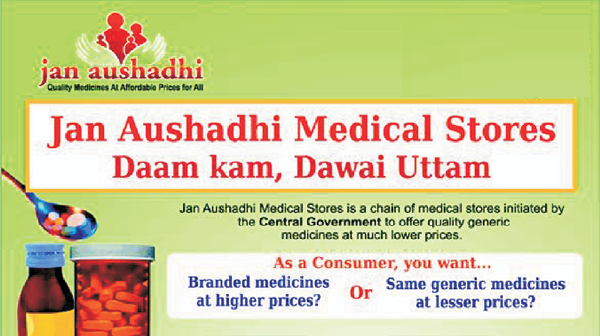
In fact, barely 20 per cent of the population can afford all the medicines that they require during an illness. Hence, even for those whom one might not think as being poor, medical expenses cause hardship. It was reported in a study that 40 per cent of people who are admitted to a hospital for some illness or injury have to borrow money or sell some of their possessions to pay for the expenses.
For those who are poor, every illness in the family is a cause of great anxiety and distress. What is worse is that this situation tends to happen again and again. Those who are poor are in the first place undernourished. These families are not eating as much as they should. They are not provided basic necessities like drinking water, adequate housing, clean surroundings, etc., and therefore, are more likely to fall ill. The expenses on illness make their situation even worse.
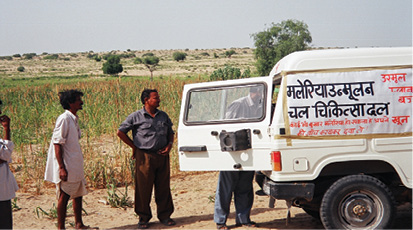
In rural areas, a jeep is often used to serve as a mobile clinic for patients.
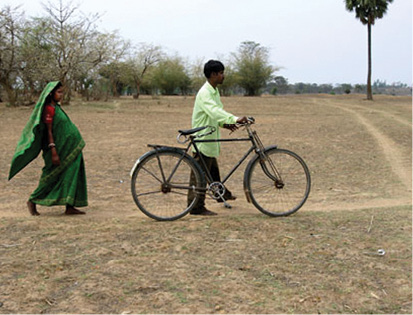
This pregnant lady has to travel many kilometres to see a qualified doctor.
Sometimes it is not only the lack of money that prevents people from getting proper medical treatment. Women, for example, are not taken to a doctor in a prompt manner. Women’s health concerns are considered to be less important than the health of men in the family. Many tribal areas have few health centres and they do not run properly. Even private health services are not available.
What can be done?
There is little doubt that the health situation of most people in our country is not good. It is the responsibility of the government to provide quality healthcare services to all its citizens, especially the poor and the disadvantaged. However, health is as much dependent on basic amenities and social conditions of the people, as it is on healthcare services. Hence, it is important to work on both in order to improve the health situation of our people. And this can be done. Look at the following example.

Sustainable Development Goal (SDG) www.in.undp.org
The Kerala experience
In 1996, the Kerala government made some major changes in the state. Forty per cent of the entire state budget was given to panchayats. They could plan and provide for their requirements. This made it possible for a village to make sure that proper planning was done for water, food, women’s development and education. This meant that water supply schemes were checked, the working of schools and anganwadis was ensured and specific problems of the village were taken up. Health centres were also improved. All of this helped to improve the situation. Despite these efforts, however, some problems – such as shortage of medicines, insufficient hospital beds, not enough doctors – remained, and these needed to be addressed.
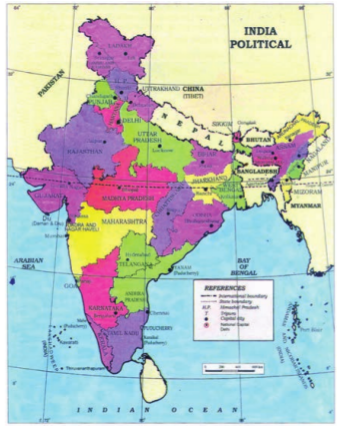
The above map of India shows the state of Kerala in pink.
Page 111 of this book has a map of India. Using your pencil outline the state of Kerala on
this map.
For more details, visit http://lsgkerala.gov.in/en
Let us look at an example of another country and its approach to issues of health.
The Costa Rican approach
Costa Rica is considered to be one of the healthiest countries in Central America. The main reason for this can be found in the Costa Rican Constitution. Several years ago, Costa Rica took a very important decision and decided not to have an army. This helped the Costa Rican government to spend the money that the army would have used, on health, education and other basic needs of the people. The Costa Rican government believes that a country has to be healthy for its development and pays a lot of attention to the health of its people. The Costa Rican government provides basic services and amenities to all Costa Ricans. For example, it provides safe drinking water, sanitation, nutrition and housing. Health education is also considered very important and knowledge about health is an essential part of education at all levels.
An important part of the Constitution says it is the “duty of the State to raise the level of nutrition and the standard of living and to improve public health.”
EXERCISES
1. In this chapter you have read that health is a wider concept than illness. Look at this quote from the Constitution and explain the terms ‘living standard’ and ‘public health’ in your own words.
2. What are the different ways through which the government can take steps to provide healthcare for all? Discuss.
3. What differences do you find between private and public health services in your area? Use the following table to compare and contrast these.
4. ‘Improvement in water and sanitation can control many diseases.’ Explain with the help of examples.

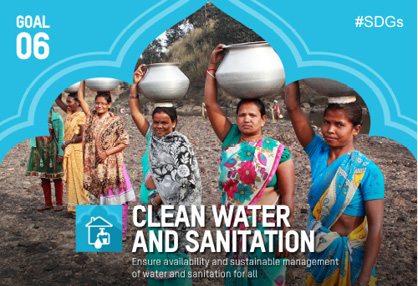
Sustainable Development Goal (SDG) www.in.undp.org
Glossary
Public: An activity or service that is meant for all people in the country and is mainly organised by the government. This includes schools, hospitals, telephone services, etc. People can demand these services and also raise questions about their non-functioning.
Private: An activity or service that is organised by an individual or company for their own gain.
Medical tourists: This refers to foreigners who come to this country specifically for medical treatment at hospitals that offer world–class facilities at a lower cost than what they would have to pay in their own countries.
Communicable diseases: These are diseases that are spread from one person to another in many ways such as through water, food , air, etc.
OPD: This is the short form for ‘Out Patient Department’. This is where people are first brought in and treated in a hospital without being admitted to any special ward.
Ethics: Moral principles that influence a person’s behaviour
Generic names: These are chemical names of the drugs. They help in identifying the ingredients. They are globally recognised. For example, acetyl salicylic acid is the generic name of Aspirin.
